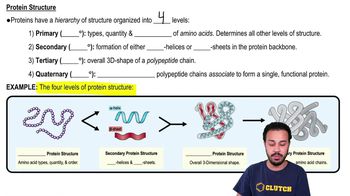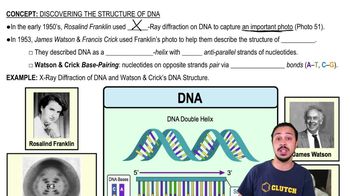Which of the following is an organic molecule?
a. H₂O (water)
b. O₂ (oxygen)
c. C₁₈H₂₉SO₃
d. FeO (iron oxide)
e. F₂C=CF₂ (Teflon)
 Verified step by step guidance
Verified step by step guidance


Which of the following is an organic molecule?
a. H₂O (water)
b. O₂ (oxygen)
c. C₁₈H₂₉SO₃
d. FeO (iron oxide)
e. F₂C=CF₂ (Teflon)
Classify each of the molecules on the left as an acid, base, or salt. The dissociation products of the molecules are shown to help you.
HNO₃ →H⁺ + NO⁻₃
Classify each of the molecules on the left as an acid, base, or salt. The dissociation products of the molecules are shown to help you.
H₂SO₄ →2H⁺ + SO²₄⁻
Classify each of the molecules on the left as an acid, base, or salt. The dissociation products of the molecules are shown to help you.
NaOH → Na⁺ + OH⁻
DRAW IT Draw a simple lipid, and show how it could be modified to a phospholipid.
Macronutrients (needed in relatively large amounts) are often listed as CHONPS. What does each of these letters indicate, and why are they needed by the cell?